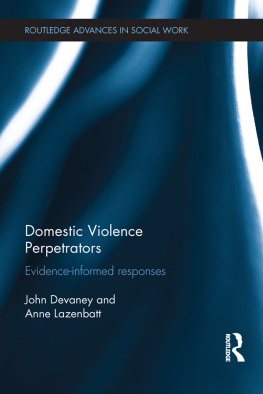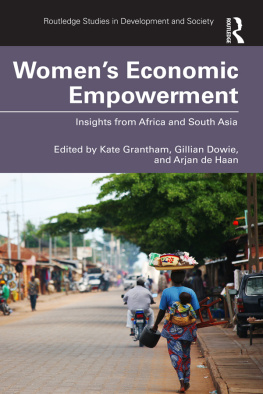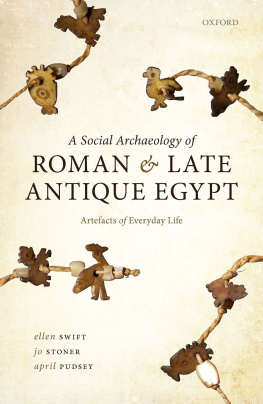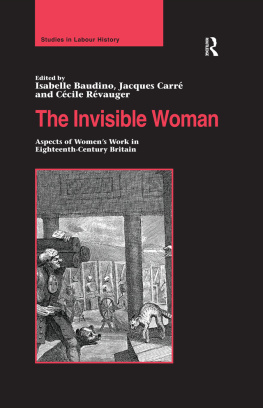DIVIDED TIME
For Helen
Divided Time
Gender, paid employment and domestic labour
Richard Layte
Nuffield College, University of Oxford
First published 1999 by Ashgate Publishing
Reissued 2018 by Routledge
2 Park Square, Milton Park, Abingdon, Oxon OX14 4RN
711 Third Avenue, New York, NY 10017, USA
Routledge is an imprint of the Taylor & Francis Group, an informa business
Copyright Richard Layte 1999
All rights reserved. No part of this book may be reprinted or reproduced or utilised in any form or by any electronic, mechanical, or other means, now known or hereafter invented, including photocopying and recording, or in any information storage or retrieval system, without permission in writing from the publishers.
Notice:
Product or corporate names may be trademarks or registered trademarks, and are used only for identification and explanation without intent to infringe.
Publisher's Note
The publisher has gone to great lengths to ensure the quality of this reprint but points out that some imperfections in the original copies may be apparent.
Disclaimer
The publisher has made every effort to trace copyright holders and welcomes correspondence from those they have been unable to contact.
A Library of Congress record exists under LC control number: 98073762
ISBN 13: 978-1-138-31162-6 (hbk)
ISBN 13: 978-0-429-45874-3 (ebk)
I would like to give my thanks to the fellows of Nuffield College for their generosity in awarding me the studentship for the doctorate upon which this book is based (Layte 1996). Jay Gershuny was my DPhil supervisor for a relatively short period, but in that time he had a great influence on my thinking and I am sure he will recognise some of his own ideas here. Similarly, Susan McRae gave me a great deal of practical advice in her short stint as supervisor. Special thanks must be given however, to Gordon Marshall and Carolyn Vogler for their long term support and hard work. Both were extremely generous in the amount of time they spent making my arguments clearer and more rigorous. I would also like to thank Duncan Gallie for his sound advice and support, both during the writing of the original thesis and since then as a colleague Martin Range and Jane Roberts were amazingly patient with my questions on computing and requests for data and Clive Payne and David Firth have been great sources of statistical advice. A number of (ex)students at Nuffield College offered practical advice and support during my years there. May Tarn and Sheila Jacobs deserve special recognition for their advice on certain technical issues as well as for their friendship and Anand Menon, Crispin Jenkinson, Mathew and Jayne Humphrey, Penny and Steve Moyle, Katherine Rake and Juliet Dowsett have been great friends and thought provoking colleagues throughout. My mother and father deserve much more than I can express here; they have always provided unflinching support and patience. Finally, I would like to thank Helen Russell for her support and insightful criticisms over the years. The original thesis and this book would have been impossible without her.
Oxford, July 1998.
This book explores how households work. Everyday, households create the fabric and texture of their lives through their paid employment and household work. In so doing they largely determine the quality of their life and their experience of it. Yet, although there have been a number of excellent British studies of the domestic division of labour and how this is combined with paid employment, these tend to have been small scale (e.g. Gregson and Lowe 1994; Morris 1993; Oakley 1974; Wheelock 1990; Yeandle 1984), or have concentrated on the role of the household in industrial restructuring (Pahl 1984, 1985) and ignored the interaction and negotiation of partners within the household. Using data from a British survey in the late 1980s, this book investigates how couples within households decide the amount of time each partner will devote to paid employment and household work and what factors shape these decisions. It examines to what degree we can view households as unified decision making entities with household work 'strategies', or whether individuals within households seek to do more or less of certain types of work. The division of work has implications for partners' sense of equity, thus the book also looks at how fair partners feel their work load is and whether inequitable shares of work lead to dissatisfaction and conflict.
Unlike in Britain, there have been several studies in North America which have investigated the processes of household production using social surveys that have yielded valuable insights into the relationship between partners' paid and unpaid work contributions. However, as I will show, these studies have been limited by inadequate theoretical approaches. If we want to study the division of domestic labour, we need to have a theoretical framework which allows us to study the division of work as a productive process influenced by cost/benefit behaviour, whilst also recognising that it is shaped by structured conceptions of gendered work roles. Previous studies have tried unsuccessfully to combine these types of analysis. For example, Sarah Berk (1985) found that Becker's (1976) economic theory of the allocation of time explained some of the variation in the division of domestic labour between partners, but she also found, contrary to Becker's theory, that if female partners work more hours in the labour market, or have a greater income, male partners do not generally do more domestic work. This suggests that partners (or at least one partner), are not 'maximising' in the manner Becker's theory proposes. To explain why this is so, Berk invokes an interactionist theory of 'symbolic displays'. This states that partners have a 'preference' for certain types of domestic work over others, a preference derived from the social roles that they are enacting. The question is, where does this preference come from? Attitudes toward work roles vary across the population, so how do we account for this? More importantly, if this theoretical framework is to hold, when and why do people switch from the maximising rationality of the economic theory to the cultural rationality of the sociological theory?
However, there is a cure for this theoretical schizophrenia if we make a theoretical and methodological jump. First of all, we need to move away from seeing social and cultural structures as external constraints in the shape of 'norms' or 'roles' and instead see them as the organising rules and resources (Giddens 1978, 1979, 1984) or social and economic capital (Bourdieu 1990), which people use to frame, or understand their decisions and choices in situations of scarcity. This means that we need to show why it is people understand their situation as they do (the structuring of rules and resources) and when and why this understanding will change. But how do we access these rules and resources? I propose that we also make a methodological and theoretical jump toward analysing behaviour as the outcome of longitudinal rather than cross-sectional processes. If we are to uncover the structured rules and resources that underlie behaviour and choices, we need to accept that peoples' definitions of a situation will differ because of the material, habitual and cultural baggage that they bring with them. These can only be accessed by examining peoples work and life histories.











